Day 1 – Afternoon We Visited The Lord Ganesha Temple in Chachoengsao : Thailand (Apr’23)
Day 1 – After lunch, I drove the motorcycle to Wat Saman Ratanaram (Lord Ganesha Temple in Chachoengsao), Thailand. It’s approx 12 KM from Banmai Market. You can reach here within 20 minutes.
During this trip, we stay one night at JK Living Hotel and Service Apartment

Wat Saman Rattanaram is famous for its gigantic image of bright pink Ganesha with the size of 16 meters tall and 24 meters long. In Ganesha’s hands, he holds a broken tusk in one hand and a lotus flower in another.
Wat Saman Rattanaram
Lord Ganesha Temple in Chachoengsao
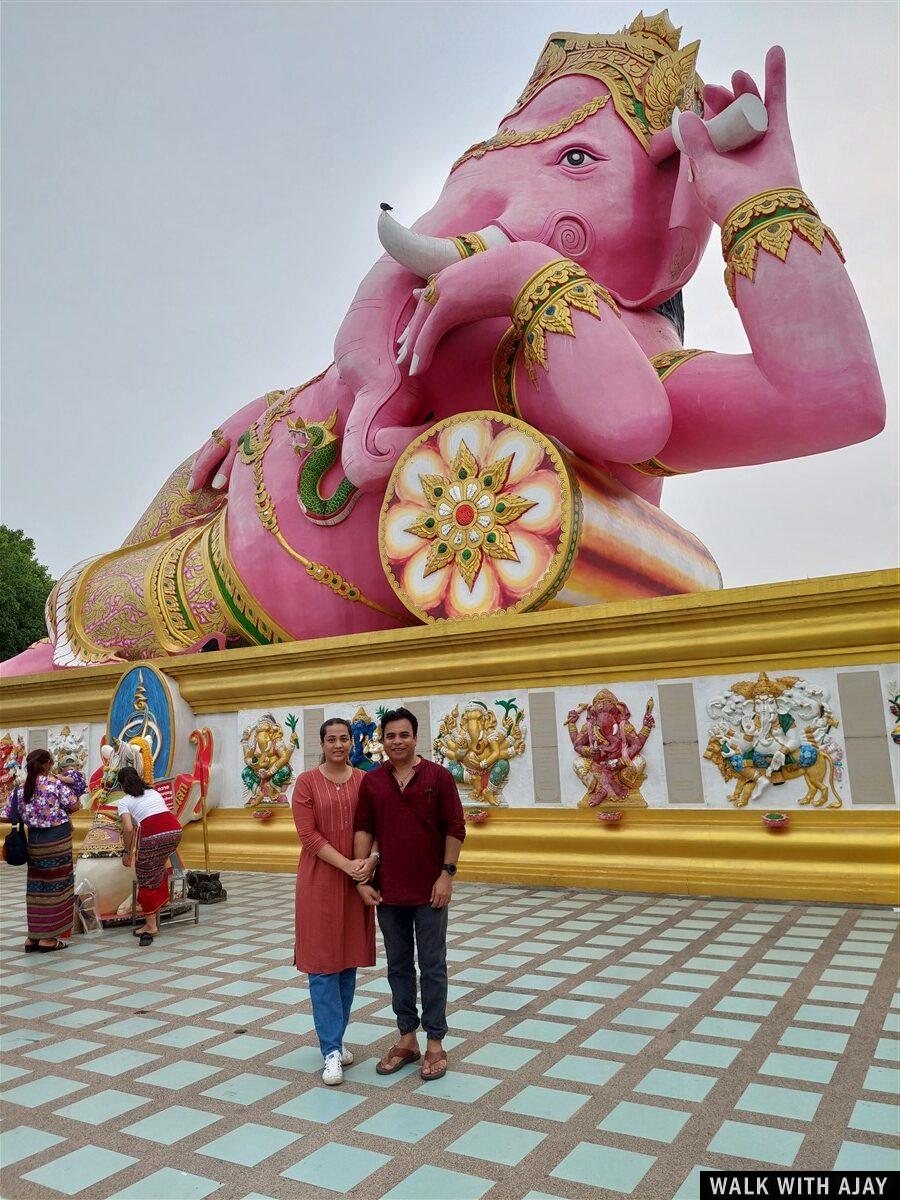
Wat Saman Rattanaram is celebrated for its colossal pink statue of Lord Ganesha, measuring 16 meters in height and 24 meters in length. This impressive figure depicts Ganesha holding a broken tusk in one hand and a lotus flower in another, symbolizing sacrifice and purity.
The temple grounds are adorned with various statues representing deities from different cultures, including a large image of the Chinese Goddess of Mercy, Guanyin, and the Hindu deity Indra riding the three-headed elephant, Erawan. This diverse representation reflects Thailand’s rich cultural tapestry and the harmonious blend of religious influences
A notable feature of the temple is the presence of eight rat statues surrounding the Ganesha figure. Visitors often whisper their wishes into the ears of these rats, believing that they will convey their desires to Lord Ganesha, who is revered as the remover of obstacles.
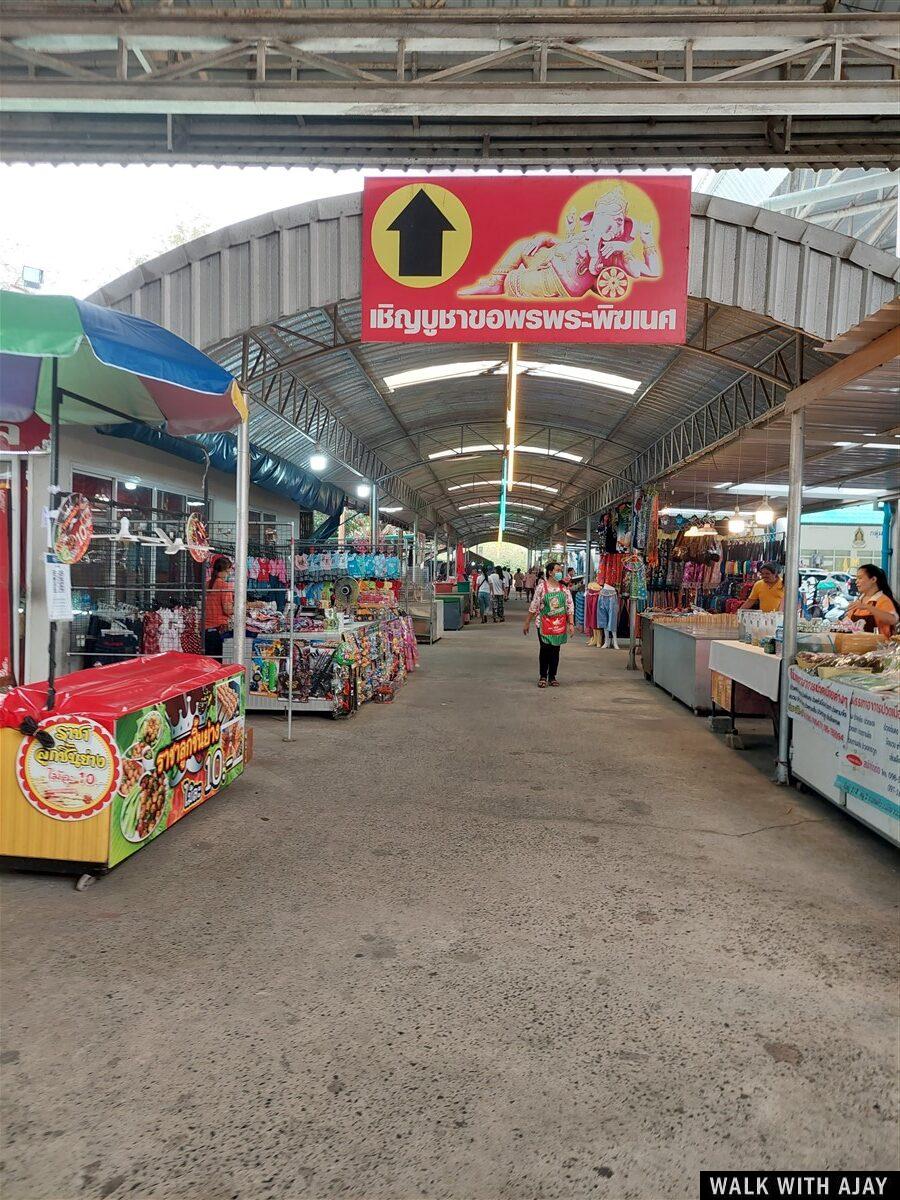
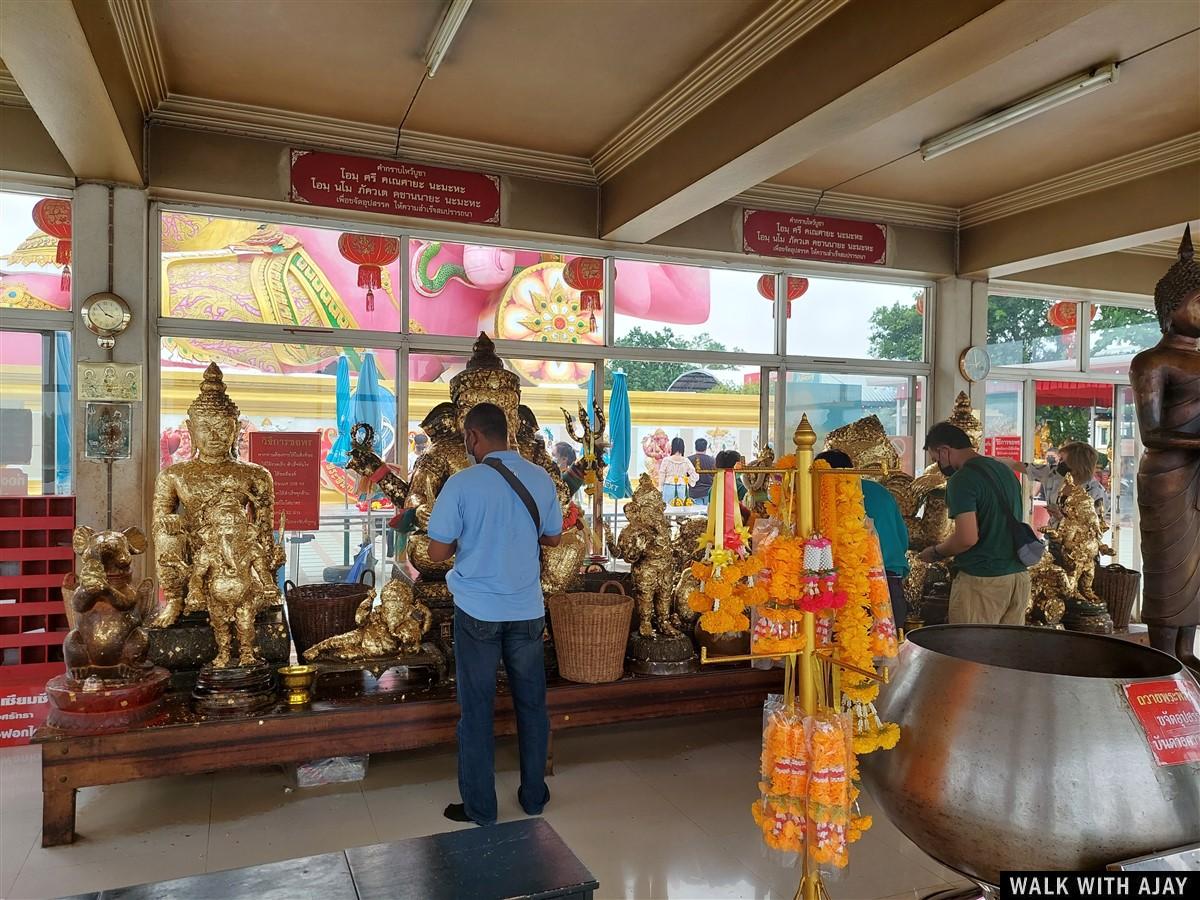
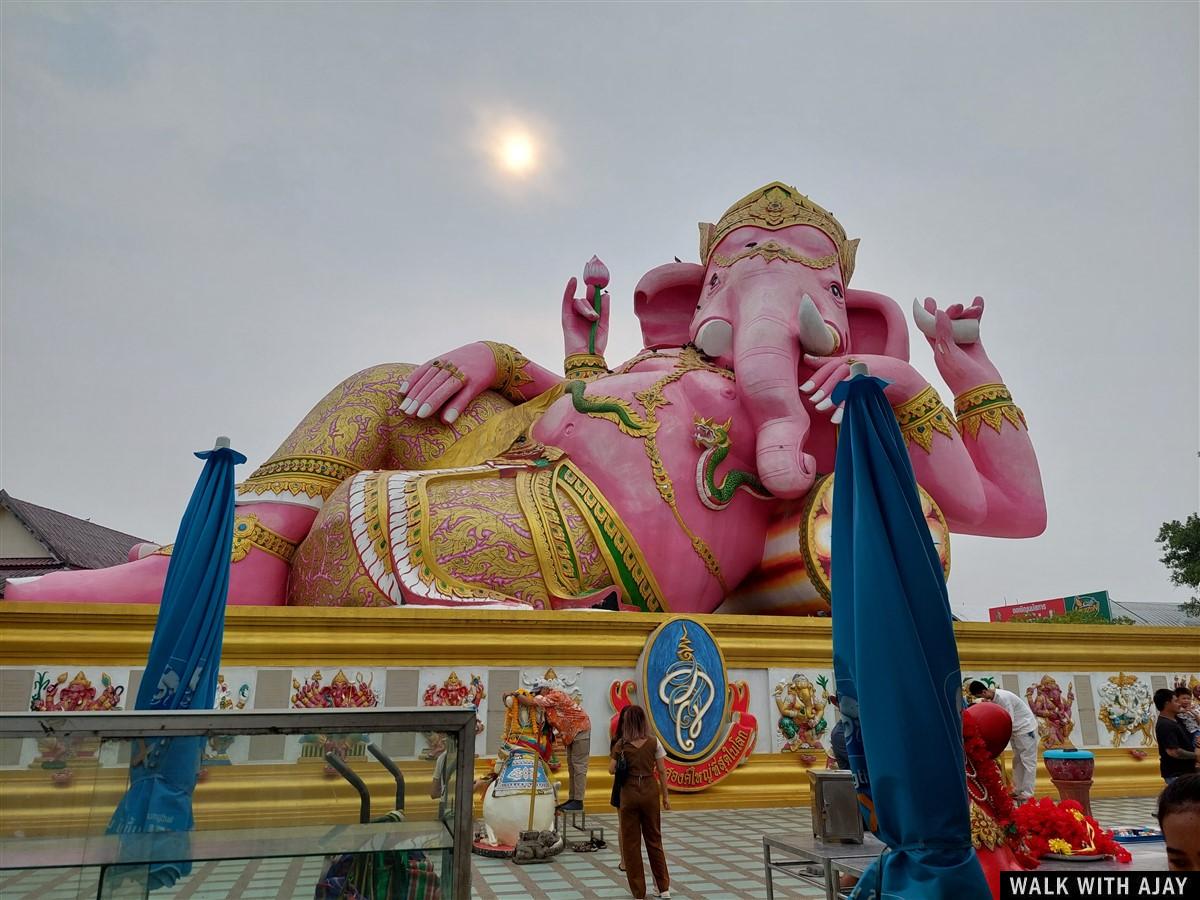
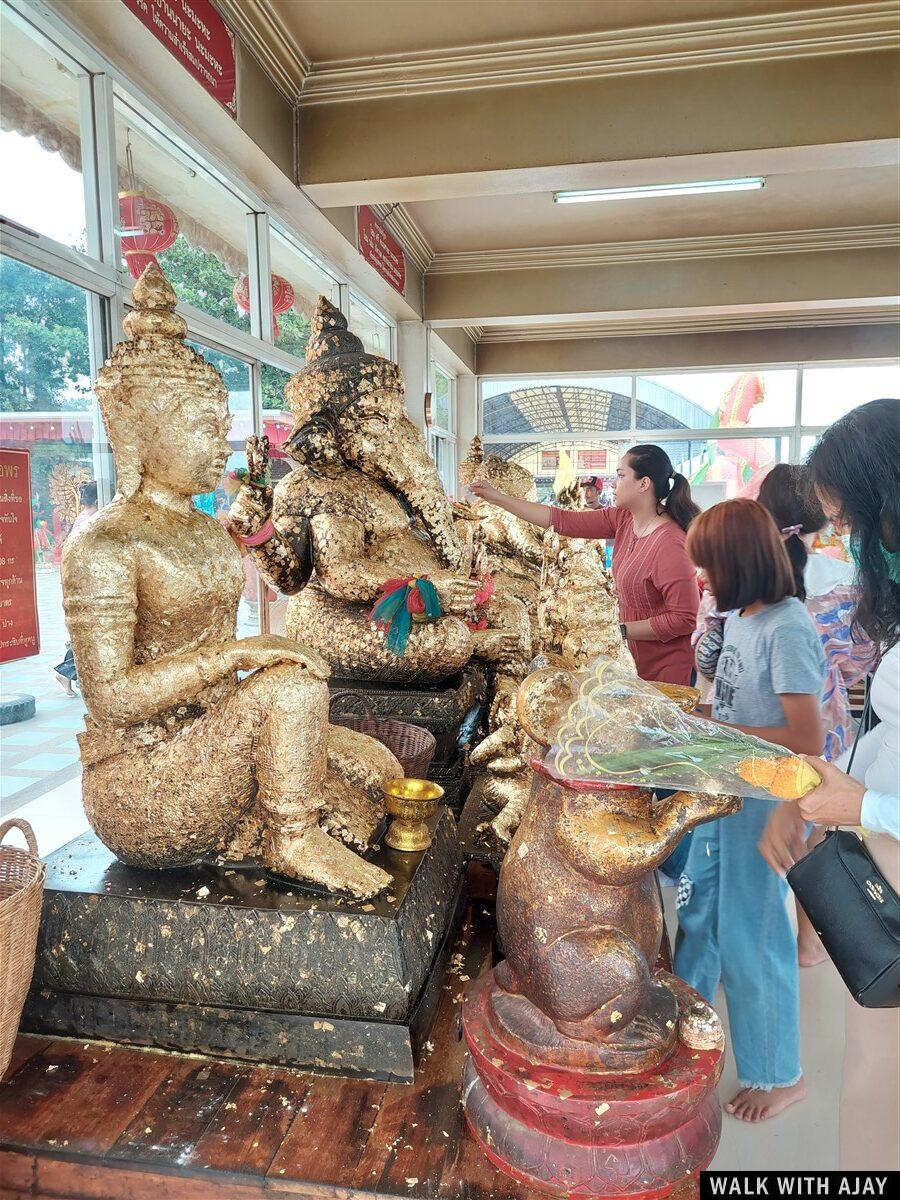
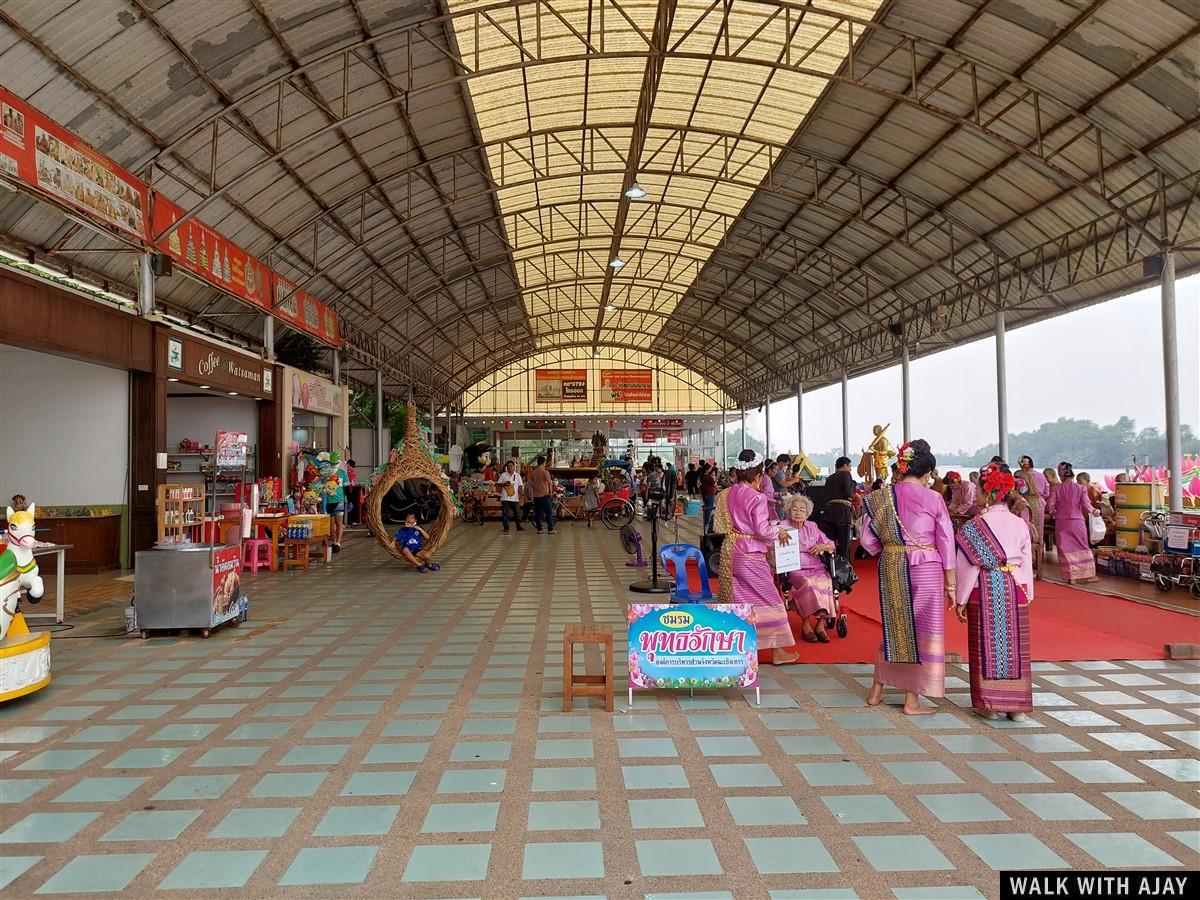
Adjacent to the temple is a bustling market where vendors offer a variety of souvenirs, local delicacies, and traditional Thai street food. The vibrant atmosphere provides an excellent opportunity to immerse oneself in the local culture and savor authentic flavors.
For those interested in exploring further, the temple offers boat rides along the Bang Pakong River, allowing visitors to enjoy scenic views of the surrounding countryside. The temple is open daily during daylight hours, and while it can become quite busy on weekends and public holidays, the experience remains enriching and memorable.
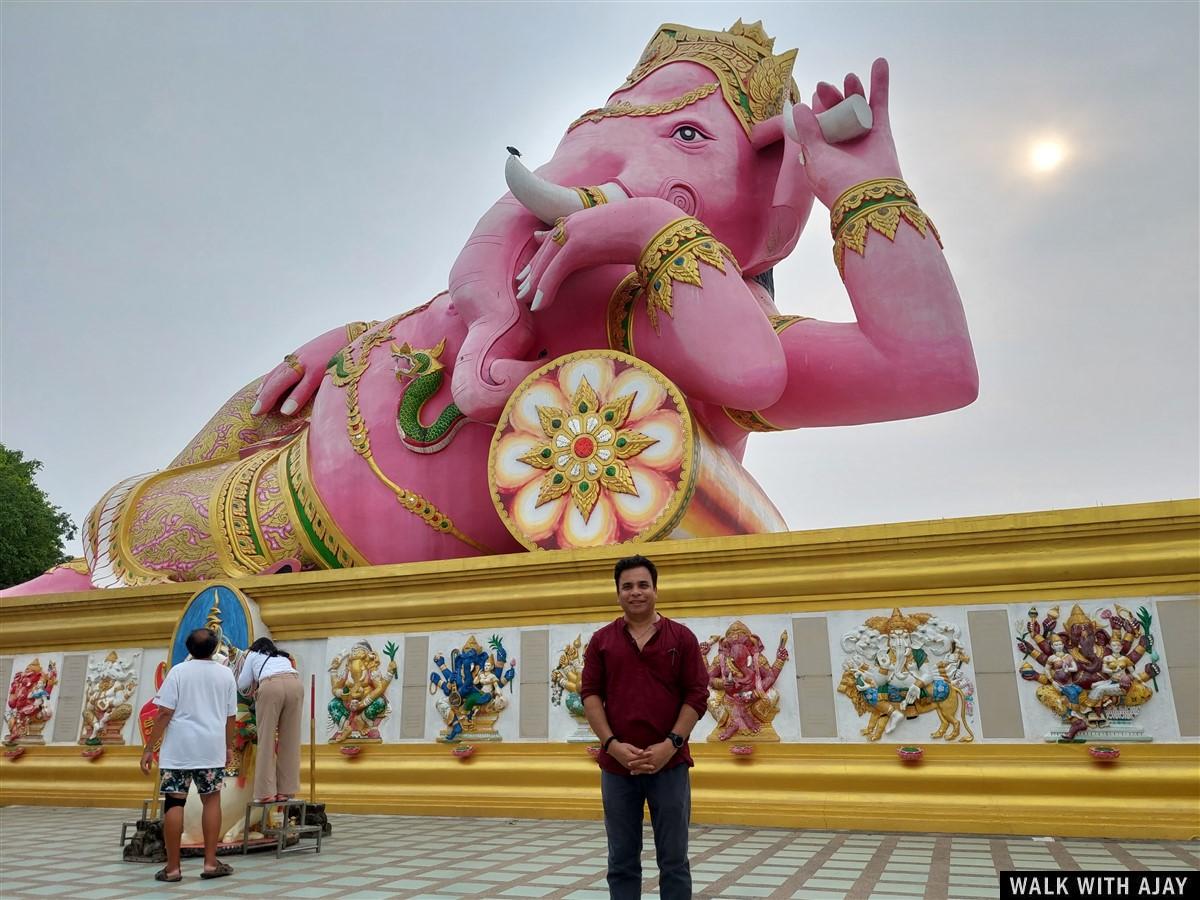
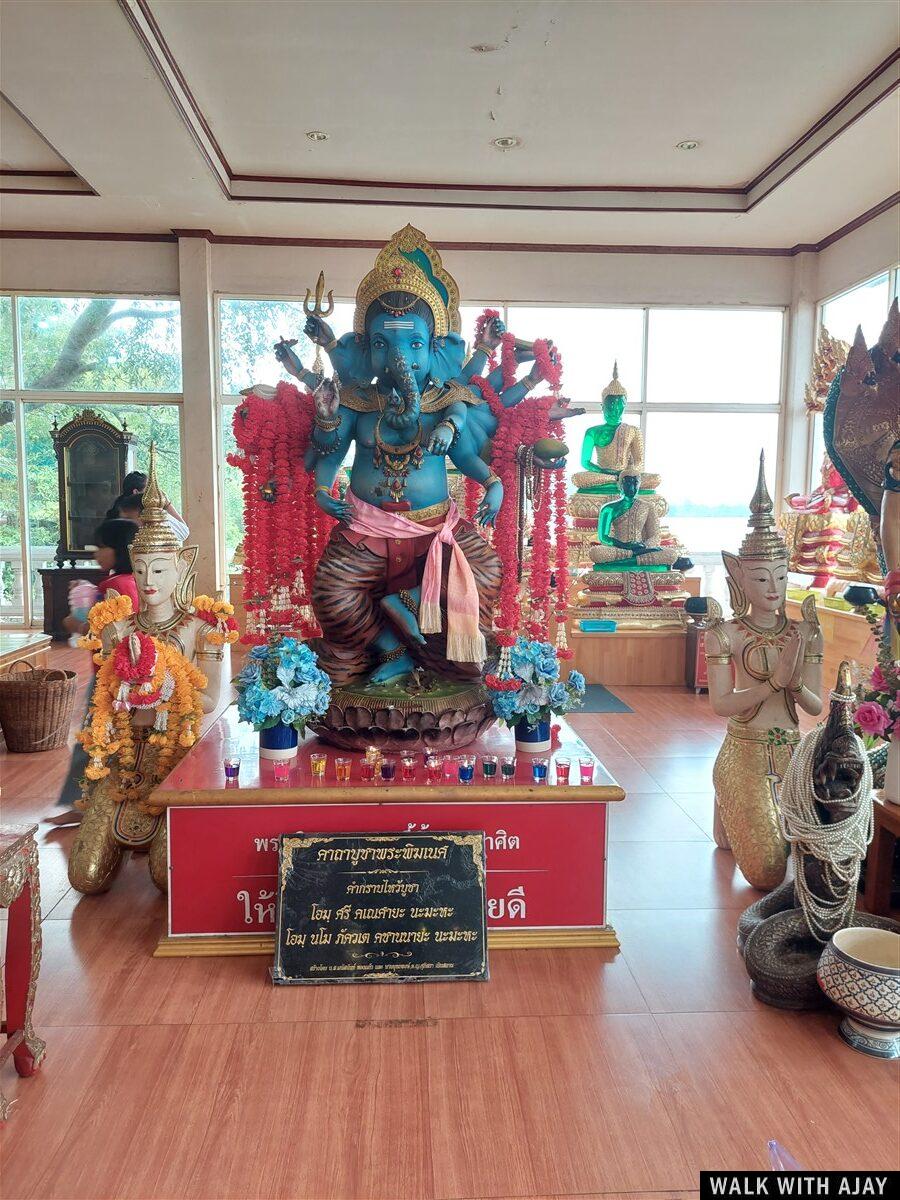
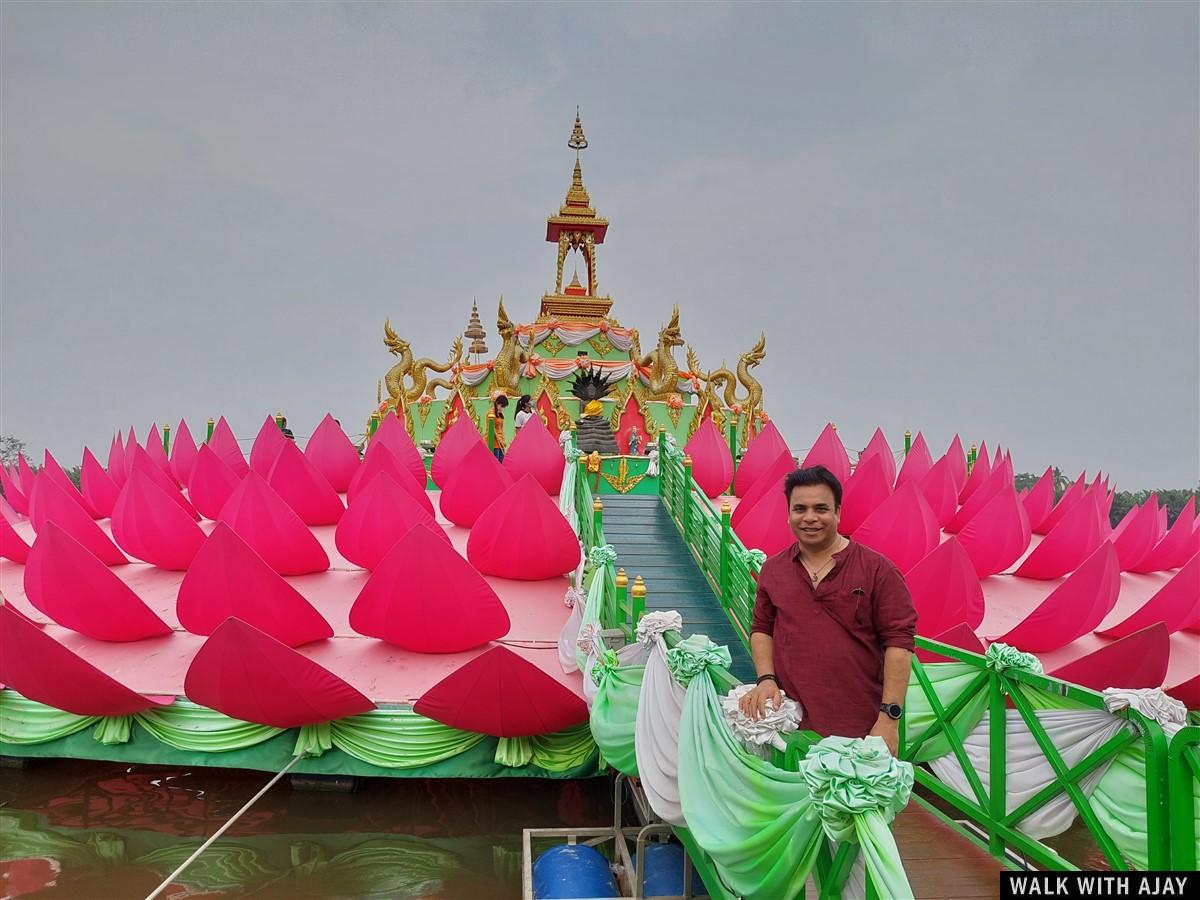
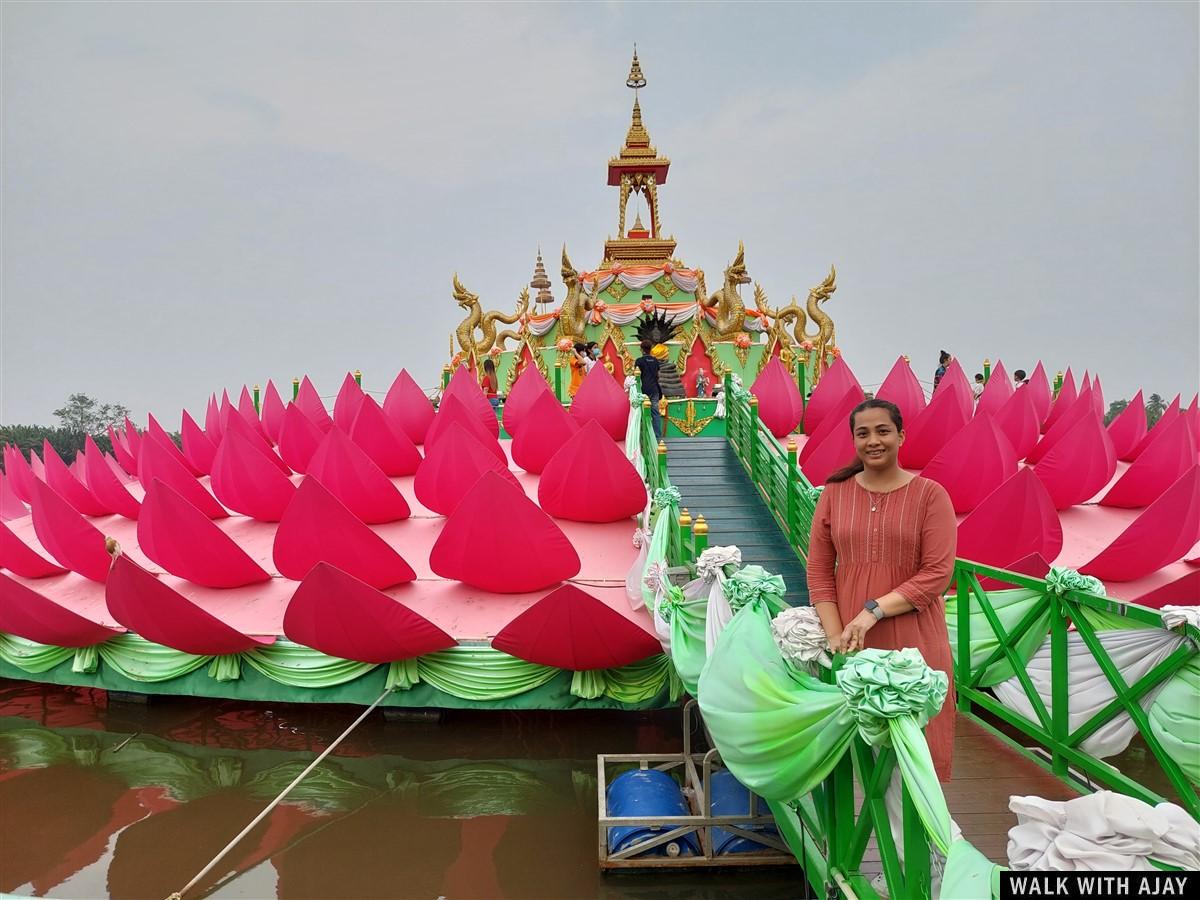
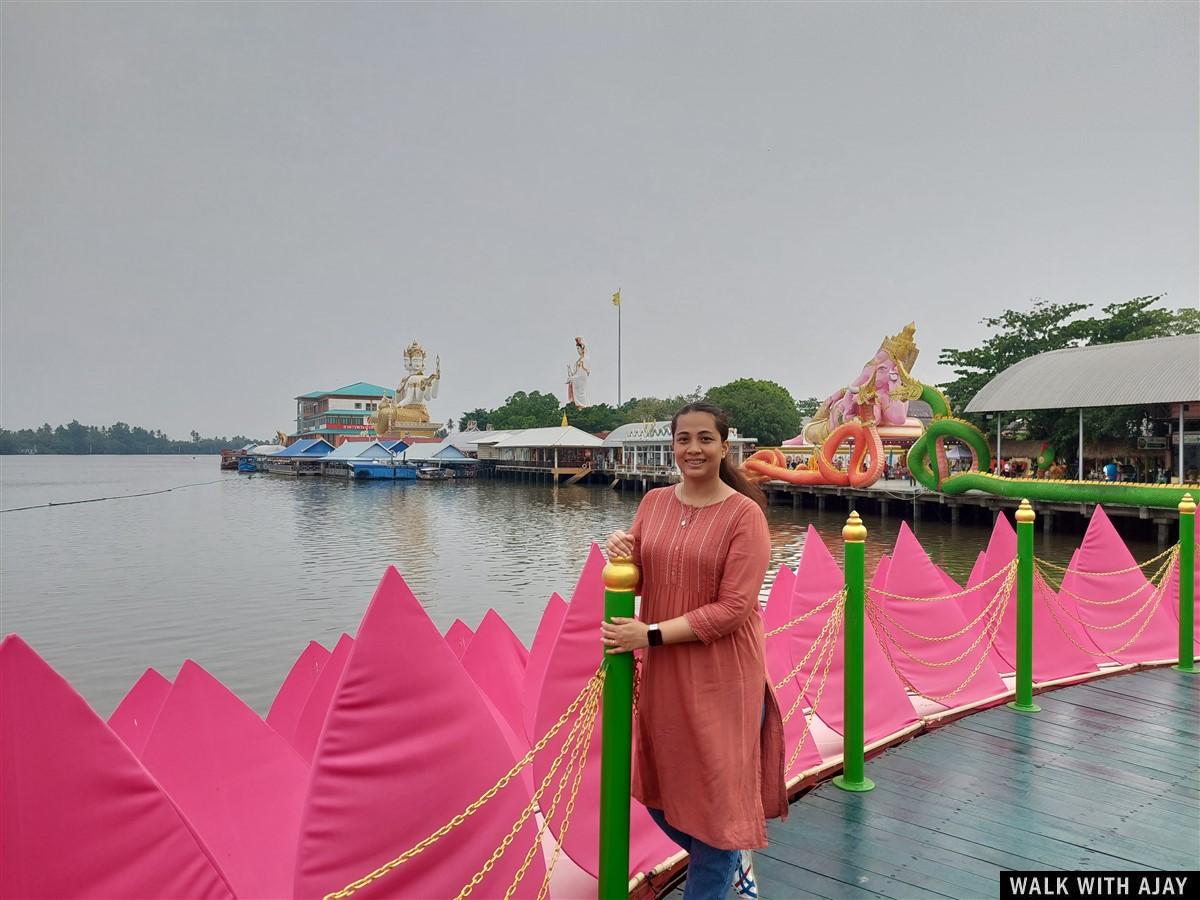
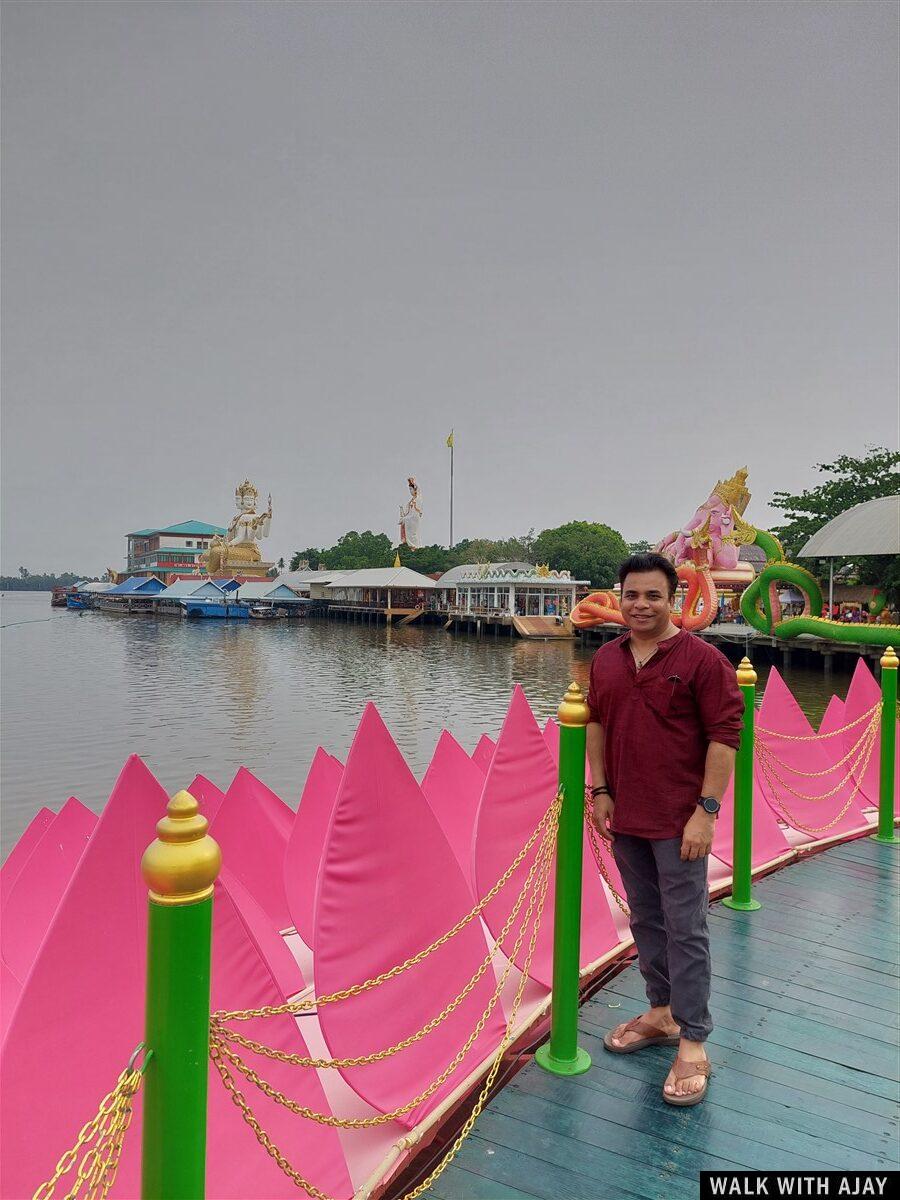
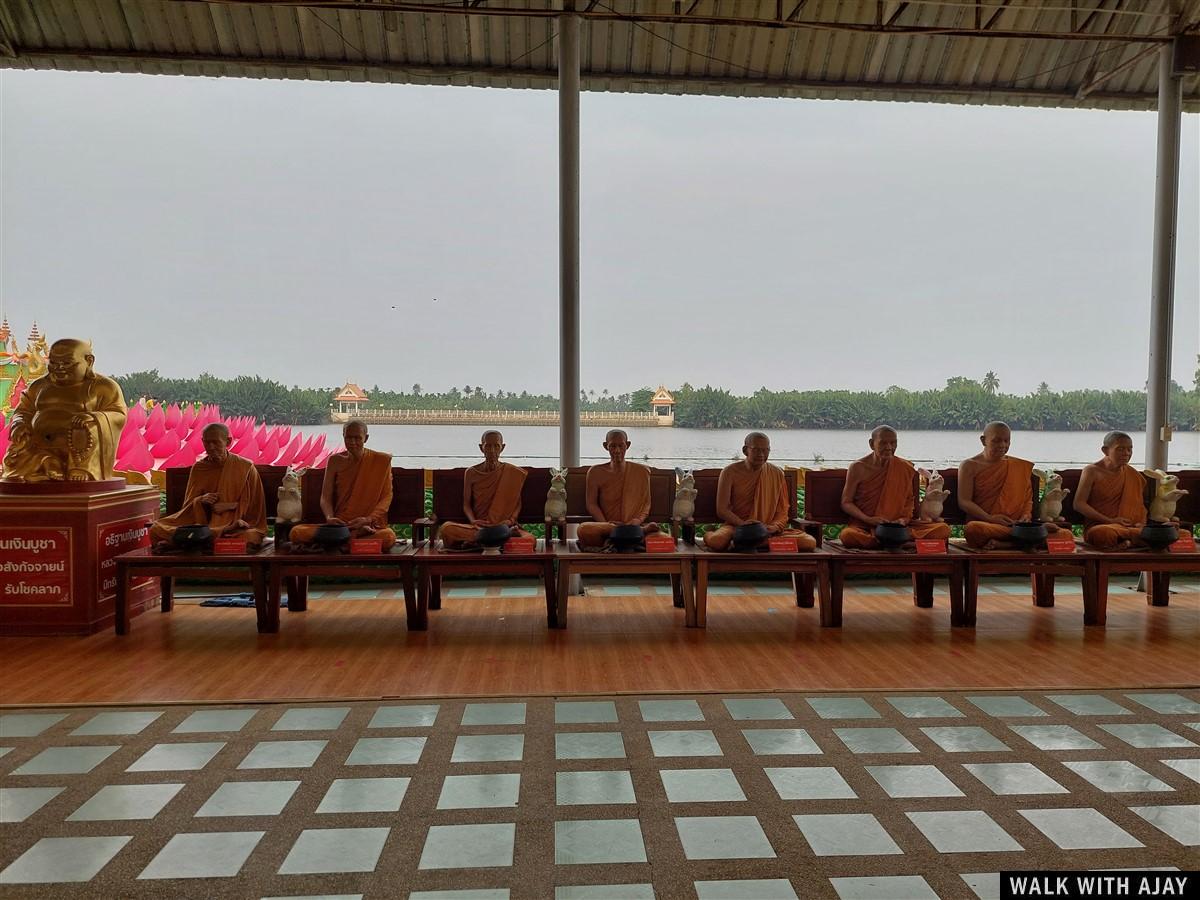


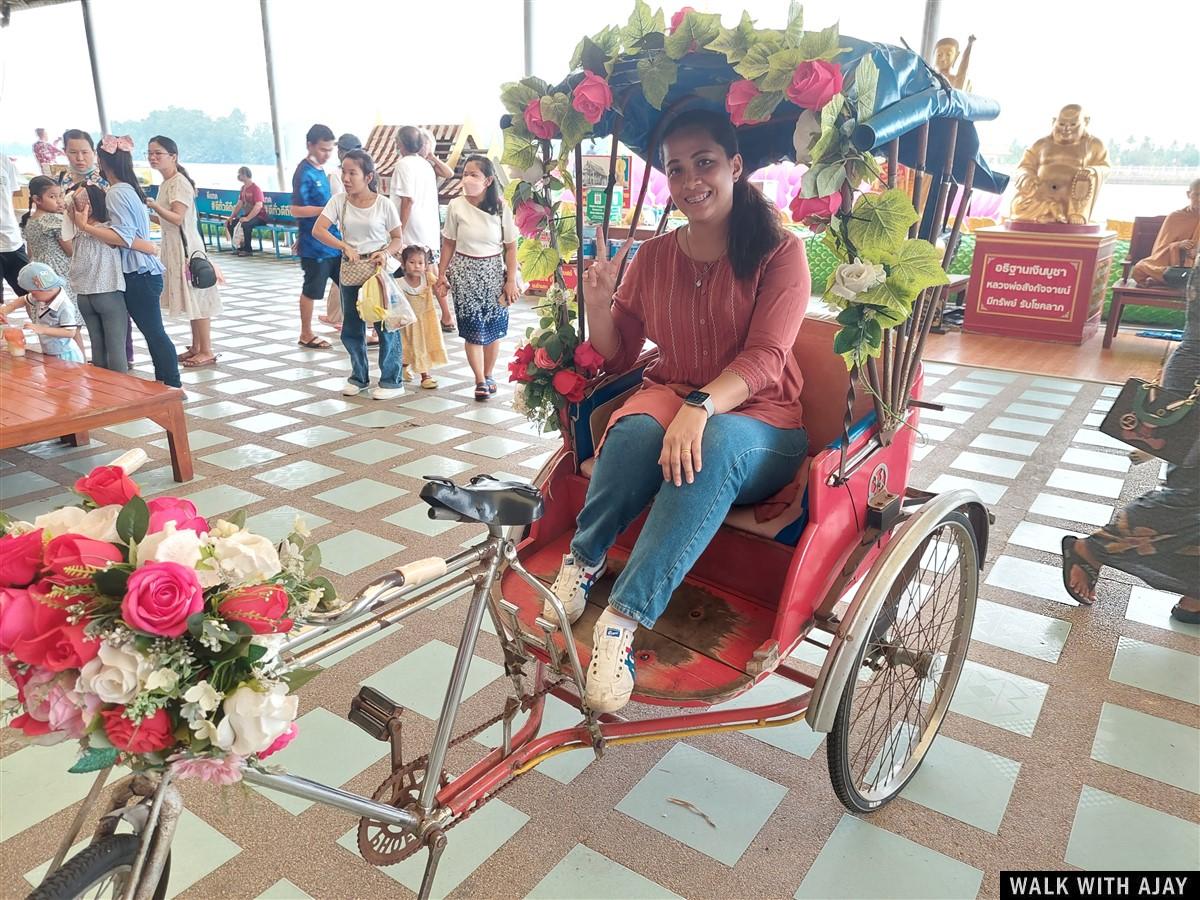
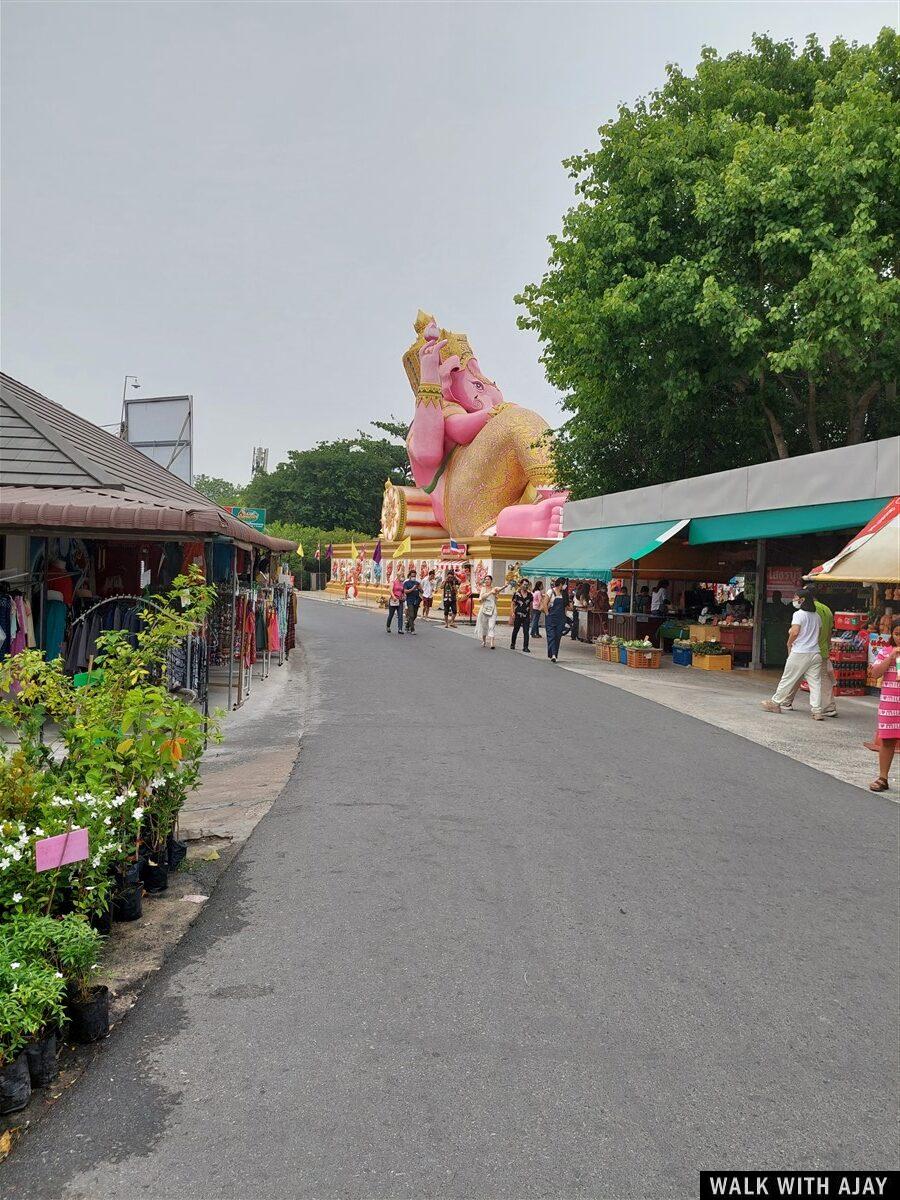
Plan Your travel with us: www.exploringtourism.com
-
What is Wat Saman Rattanaram, and why is it known as the Pink Ganesha Temple?
-
Wat Saman Rattanaram is a colorful temple in Chachoengsao Province, best known for its massive pink reclining statue of Lord Ganesha—16 m tall and 22–24 m long—making it Thailand’s largest of its kind.
-
-
Where is Wat Saman Rattanaram located and how far is it from Bangkok?
-
Located in Bang Khla District, Chachoengsao Province, the temple sits about 75–90 km east of Bangkok and is accessible via bus, train, or private vehicle.
-
-
What are the best ways to travel from Bangkok to this temple?
-
Options include:
-
Private car, taxi, or Grab (1.5–2 hours)
-
Bus from Ekkamai or Mo Chit (~2.5–3 hours)
-
Train from Hua Lamphong Station (~3 hours), then tuk-tuk to the temple
-
-
-
Is there an entrance fee, and what are the opening hours?
-
Entry is free (donations welcome). The temple is open daily during daylight hours, typically from early morning until late afternoon.
-
-
What rituals or unique experiences can visitors participate in?
-
Whisper a wish into the ear of one of eight rat statues at the base of Ganesha—each rat represents a day of the week—before making a small offering.
-
-
What other deities and cultural elements are present at the temple?
-
The temple complex includes statues of Guanyin (Chinese Goddess of Mercy), Indra riding Erawan, Brahma, Naga serpents, and Buddhist figures, reflecting Hindu, Buddhist, and Chinese religious influences.
-
-
Are there nearby attractions or activities to combine with a visit?
-
Yes—you can explore nearby riverside temples, local markets, or take a boat ride on the Bang Pakong River. Close attractions include Wat Sothon Wararam and Khlong Khuean Ganesh International Park featuring the world’s tallest standing Ganesha statue.
-
-
What is the significance of the pink Ganesha statue’s pose and gestures?
-
The reclining Ganesha holds a broken tusk (symbolizing sacrifice and wisdom) and a lotus flower (representing purity).
-
-
When is the best time of year or day to visit to avoid crowds or heat?
-
The ideal visiting season is between November and February when weather is cooler and drier. Aim to visit in the early morning or late afternoon to avoid the midday rush and heat.
-
-
What amenities are available on-site for visitors?
-
The temple offers a vibrant marketplace atmosphere with food stalls, souvenir and amulet shops, and sometimes riverside snack vendors. Some sites also include a museum detailing Ganesha’s stories and the temple’s heritage.
-












